With the development of the national economy, the electricity of users and enterprises has been increasing year by year, especially in areas where rural areas and urban-rural areas are combined with high power load, and some distribution transformer stations are affected by geographical location and technical factors. Balanced and low voltage conditions stand out. In addition, three-phase four-wire power supply is commonly used in China's urban and rural low-voltage distribution networks. Distribution transformers are mostly 10/0.4kV step-down, Y/yn0 connections. Ideally, the three-phase load balances the symmetrical configuration of the transformer. However, the actual power supply network is a mixture of three-phase production power and single-phase load power, coupled with the inconsistency of standards for related lines, uncontrollable capacity expansion for single-phase users, access to high-power loads, and single-phase loads. The dispersion of electricity time is a factor that causes three-phase load imbalance.
In addition to the three-phase load imbalance, it will not only affect the user voltage and the line loss of the station, but also increase the active loss of the transformer, increase the operating temperature of the distribution transformer, reduce the efficiency of the distribution transformer, affect the output power of the motor and make the winding temperature When the voltage rises, a neutral point voltage shift occurs, resulting in asymmetry of the three-phase voltage, resulting in a situation where the local voltage is too high or too low. In severe cases, the user's electrical appliances are burned. In addition, it will increase interference with the surrounding communication systems, affect the normal communication quality, and cause certain impact on the power supply enterprises and people’s lives.
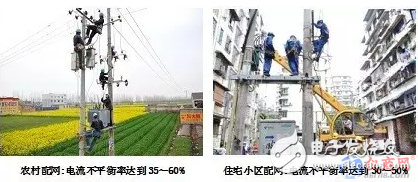
Figure 1 Rural Distribution Network and Residential Community
Distribution network current imbalance problemTo solve the above comprehensive problems, it is necessary to apply comprehensive management techniques to solve the three-phase load imbalance problem of the low-voltage power distribution system. The most effective method for the unbalanced current generated by the current three-phase load is to make it as reasonable as possible. Allocate the load. The main function of the current three-phase load unbalanced automatic adjusting device in the low-voltage power distribution system, especially in the rural network transformation process, is to automatically detect the unbalanced problem in the three-phase circuit through an integrated technical means, and intelligently optimize the three-phase The current is imbalanced to achieve a "reasonable distribution load".
This paper sets up different test conditions to intuitively detect the overall ability of a three-phase load imbalance automatic adjustment device to automatically detect unbalanced three-phase lines and intelligently optimize three-phase current unbalance.
Test condition analysis
Test device technical parameters
AC input (three-phase four-wire): 400V 50Hz
Rated capacity: 75kVA
As shown in FIG. 2 , a three-phase current unbalance compensation test platform is built, and the simulation device intelligently compensates the operating environment when the three-phase unbalanced active current flows. In the illustrated test circuit, R1, R2, and R3 are resistive loads.
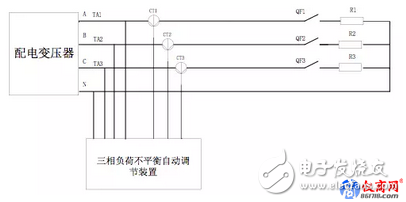
According to the test requirements, the transformer is correctly connected, the selected device is operated in the active imbalance compensation mode, and the unbalance compensation capability of the detection device is as follows in the following three different working conditions.
Condition 1:
The device under test is incorporated into the test circuit as shown in FIG. Only put QF1 load, adjust R1, only A phase circuit load 30A active current;
Condition II:
The device under test is incorporated into the test circuit as shown in FIG. Only put QF1, QF2 load, adjust R1, R2, only A phase circuit and B phase circuit load 30A active current;
Condition 3:
The device under test is incorporated into the test circuit as shown in FIG. Input QF1, QF2, QF 3-way load, adjust R1, R2 and R3, A, B, C three phases respectively load 10A, 20A, 30A active current;
Record the following content separately:Unbalanced compensation of the front side current (A, B, C, N) and unbalanced compensation of the grid side current (A, B, C, N) require three-phase load imbalance to be automatically adjusted under the above three conditions. After the device is operated and compensated, the current on the grid side satisfies: the unbalance of the A-phase, B-phase, and C-phase currents is within 10%, and the test is qualified.
The degree of unbalance is the degree of three-phase imbalance in a three-phase power system. It is represented by the rms value of the negative-sequence component of voltage or current and the rms value of the positive-sequence component. Because there is no effective test method for the negative sequence component, in engineering, the three-phase current unbalance degree is calculated by the following method:




(The unbalance calculation in this article refers to the above method)
Test data results and analysisWorking condition 1: Only A phase input 30A active current for unbalance compensation
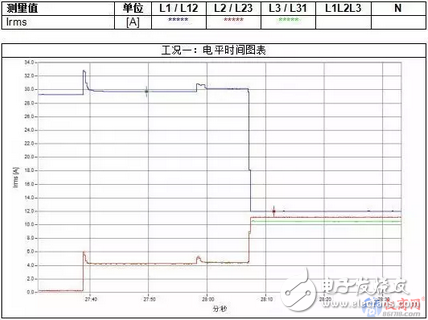
Record condition 1:
The test data is as follows (Because there are a lot of data actually recorded, the data in the following table is the average value of continuously recorded data in a certain period of time)

Working Condition 2: Only A/B phase inputs 30A active current respectively to perform unbalance compensation
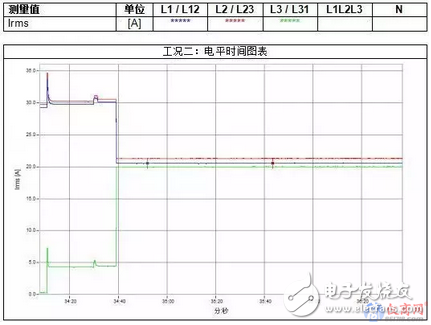
Record condition 2:
The test data is as follows (Because there are a lot of data actually recorded, the data in the following table is the average value of continuously recorded data in a certain period of time)

Condition 3: A/B/C inputs 10A/20A/30A active current respectively to perform unbalance compensation
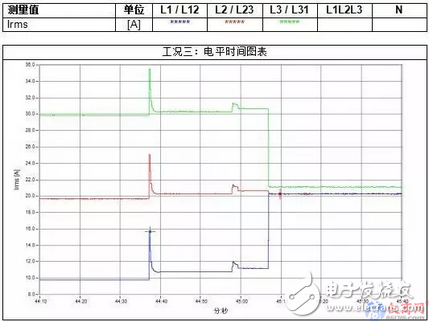
Record condition 3:
The test data is as follows (Because there are a lot of data actually recorded, the data in the following table is the average value of continuously recorded data in a certain period of time)

The above test data and results visually reflect the three-phase unbalanced active power compensation capability of the three-phase load imbalance automatic adjustment device. As described in the background introduction of this article, the three-phase imbalance problem is a comprehensive problem that requires comprehensive management. In the process of governance, different application requirements, priority levels of comprehensive management functions, economy, and practicality need to be considered. Specifically, applications such as single-phase distributed photovoltaic access to low-voltage distribution networks and application requirements of conventional single-phase consumers should be studied differently; the functions of the actual devices are generally comprehensive, including unbalanced compensation, and no Functional compensation, harmonic compensation and other functions, how to locate the priority of each function, but also need to be fully considered; In addition, because the device is widely used outdoors, especially in remote rural areas, for IP protection level, life cycle, maintenance ability Others are also designed to be integrated.
In short, with the implementation of the 13th Five-Year Rural Network Transformation and Upgrading Project, the problem of unbalanced three-phase load of the low-distribution system needs to be vigorously addressed. The three-phase load imbalance automatic adjustment device is studied to timely grasp the load size of the distribution transformer and three. Phase current, voltage and other conditions, the comprehensive use of technical means, fundamentally solve the "three-phase unbalanced" power quality problem is particularly important.
This is the most competitive 15.6 inch Budget Business Laptop, comes with 2022 intel latest celeron cpu-N5095, J4125, etc . Of course, other Budget Working Laptop are also available.
For example, 15.6 inch i5 4th Budget Workstation Laptop for your mid-level task, 14 inch i5 10th Budget Laptop For 3d Modeling, 15.6 inch i7 5th Budget Laptop For Photoshop, or 15.6 inch i7 10th budget laptop for work, etc. Of course, there are other type device, like Android Tablet, 2 In 1 Laptop, Mini PC , All In One PC.
A thin, portable, light-performance laptop may be the ideal tool when people choose a business laptop, therefore just ask yourself 1.what jobs you mainly need this device to do, then choose the cpu and storage necessary, 2.if need fingerprint or backlight; 3. prefer type C charging? Or traditional DC is ok? 4. Does RJ45 webcam is important for you? 5. how many hours you need the laptop to work when do your main jobs?
6.Camera position, prefer on the middle of screen up? or is ok on the bottom of screen?
Budget Business Laptop,Budget Working Laptop,Budget Workstation Laptop,Budget Laptop For 3d Modeling,Budget Laptop For Photoshop
Henan Shuyi Electronics Co., Ltd. , https://www.shuyilaptop.com
